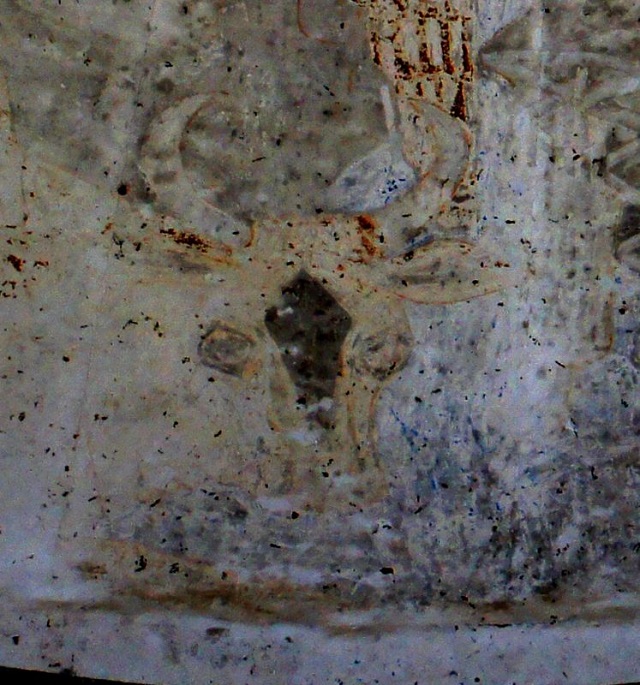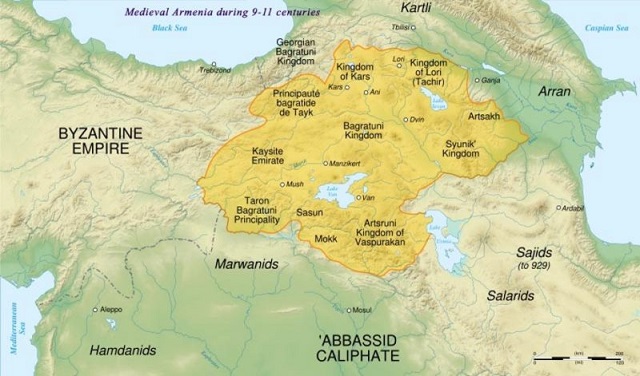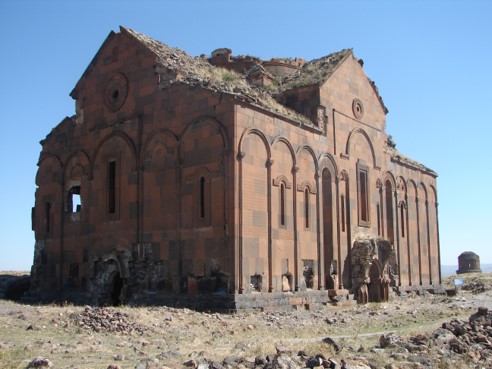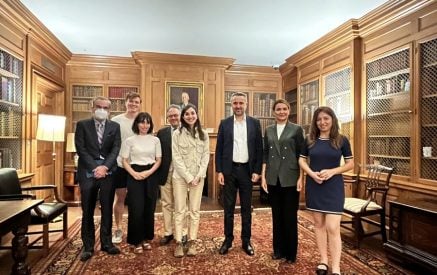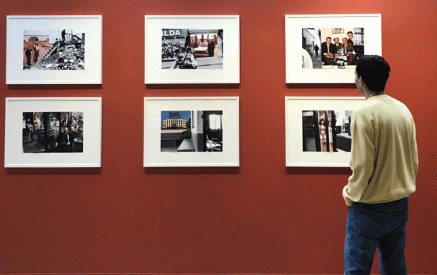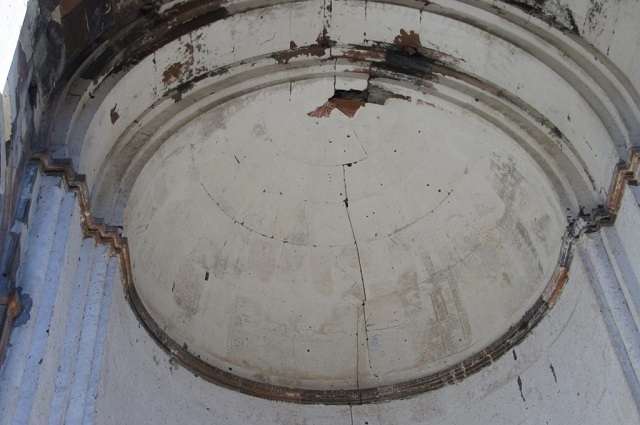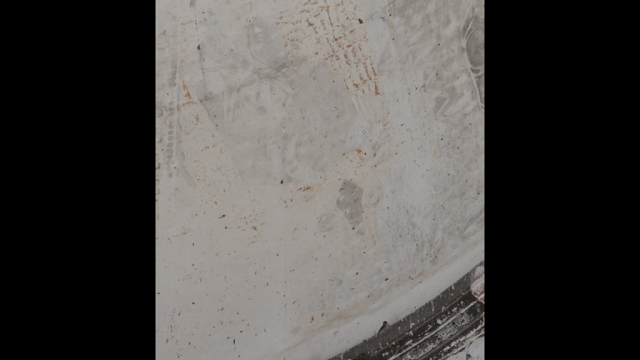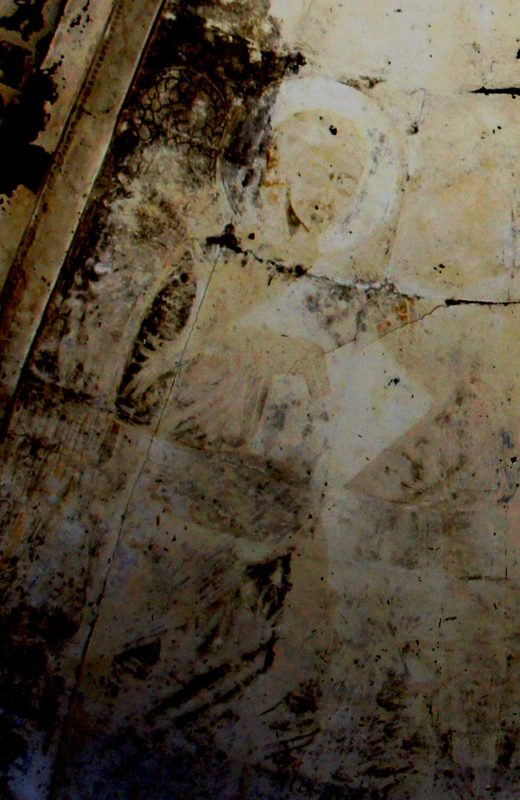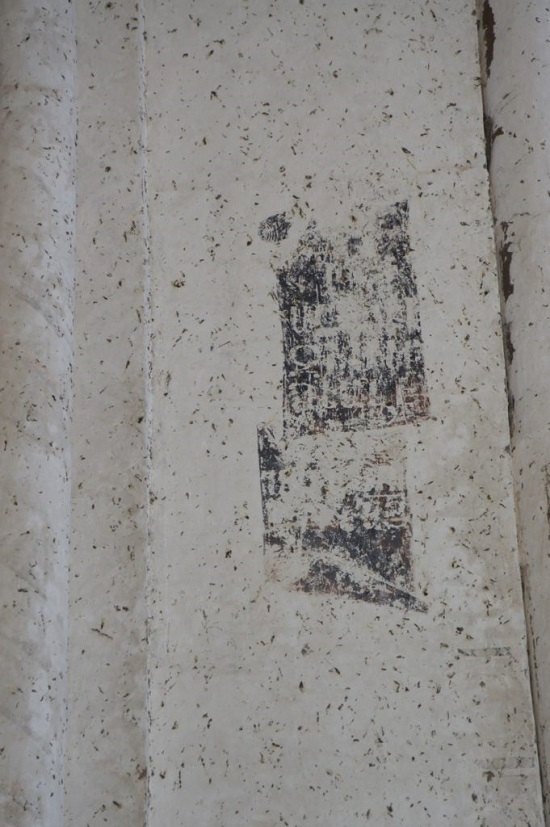The Armenian Mirror-Spectator. SOMERVILLE, Mass. – It may have taken as much as one thousand years, but images deliberately obscured and faded are now coming to light in the famous cathedral of Ani. Dr. Christina Maranci, Arthur H. Dadian and Ara T. Oztemel Professor of Armenian Art at Tufts University, has used accessible software tools to reveal more clearly some of this art and an inscription, and she has done this all from her home in Somerville, near Boston.
It began last summer, Maranci wrote, when she was reading an undergraduate student thesis about the medieval Armenian city of Ani. The author, Atineh Movsessian, repeated the assertion of the famous art historian Sirarpie Der Nersessian that there is little evidence for Armenian wall paintings from the tenth century, and this spurred Maranci to relook at pictures she had taken of churches over the years.
Several years earlier, in her study of the Armenian church of Mren (today located in Kars province of the Republic of Turkey), she had used image adjustment software, Photoshop, on photographs she had taken during a visit there. Her naked eye was unable to make out many details that the graphics editor made discernible. With some software adjustments, she was able to reconstruct the visual program of images and inscriptions in the church.
This experience led Maranci to review her photographs of the cathedral at Ani, the medieval capital of the Armenian Bagratuni kingdom. This led to the discovery of the naturalistically depicted image of an ox in the cathedral’s apse, which was hitherto unknown. An experienced researcher in the field of Armenian art, she said, “it was to my astonishment that I was confronted with this ox, no less because it appears in the most famous of Armenian churches (or at least one of the top ten).” This ox became the key to decoding a whole series of images as well as to discovering a previously unknown Biblical inscription.
Read also
The cathedral at Ani was begun in 989 under the patronage of King Smbat Bagratuni by the famous architect Trdat, and completed in 1001 with the support of Smbat’s sister-in-law Queen Katramide. Although architecturally the cathedral is well studied, the internal decorations have largely been passed over, in part because visitors during the past several centuries have had difficulty in making them out and in part because Armenian wall paintings in general have not been a subject of great study. Maranci speculated that the lack of attention to this topic may be because there are so few known examples surviving of Armenian wall paintings before the 17th century, 20 or 25 in all.
Their poor condition, plus the possibly mistaken belief that Armenians were reluctant to paint and use icons in their churches in medieval times, further discouraged attention, Maranci said.
Maranci explained that her work on each image with Photoshop was laborious, altering the tonal ranges and colors, and using the Inversion tool to obtain more details, while not adding or subtracting any isolated points, lines or zones. She said, “The process of recovering and identifying the images took several weeks, as well as feedback from many viewers.”
Knowledge of the conventions of medieval Christian iconography helped greatly in the reconstructive process, as it allows educated suppositions about the contents of the imagery. For example, in addition to the ox, remnants of a throne on the cathedral’s wall can be seen even to the naked eye. Maranci said that she knew that an ox appears next to a throne only two times in the Bible, in the Vision of Ezekiel and in Revelations (the Gospel of John). The throne usually is surrounded by three other figures, a man or angel,, an eagle and a lion. The four figures symbolize the four evangelists, Luke, Matthew, John and Mark, and are often arranged in a particular order. Indeed, these figures can be identified tentatively at the Ani cathedral too.
Sometimes detective work is also necessary. Six lines of lettering in Classical Armenian on a scroll painted on the south wall of the apse are hard to make out except for two words, ՄԵՐՁԵԱԼ (having approached), and the ending of the last line, Ա[ստուծո]յ, or “of God.”
Maranci said that knowing this was most likely a scriptural text, she did a biblical word search on arak29.am, and found 18 occurrences of ՄԵՐՁԵԱԼ. Only one however was in a sentence ending in “of God,” so that allowed her to conclude that the painted inscription was the closing of Luke 10:11 (բայց զայս գիտասջիք զի մերձեալ է արքայութիւն Աստուծոյ” (… but you shall know this; that the Kingdom of God has come near).
Maranci presented the results of her Ani cathedral investigations at Yerevan’s Mesrop Mashtots Institute of Ancient Manuscripts, commonly referred to as the Matenadaran, on February 28. She was planning to give some lectures on the images of the cathedral in the US too, and while these have been postponed or cancelled due to COVID-19, she soon will publish an article on them in the Revue des études arméniennes. One important conclusion she has is a call for physical work to save what is left of the cultural legacy of Ani. She said in her lecture notes, which she was kind enough to show to this author, “The wall paintings of Ani and its environs are in urgent need of scientific attention, using the best methods of documentation, stabilization, conservation, investigation, and monitoring. Ani’s status as a UNESCO World Heritage Site will hopefully give impetus to such work.”
Now that Maranci, like the rest of us, is in lockdown mode due to the pandemic, she has used the abovementioned approach of software enhancement of photographs to study other sites. She has found major zones of painting at the nearby Church of St. Gregory Abughamrents at Ani and the nearby monastery of Horomos, where the walls of the churches are covered with plaster.
Although her upcoming trip to Hromkla (present-day Rumkale in Turkey, near Aintab/Gaziantep), a former seat of the Armenian Catholicosate, had to be postponed, she was able to study photographs of the site. An image in a Turkish book of one of the walls of the main gateway of the site, with no discussion of the contents, allowed her to decipher part of a large carved inscription. It named a Hohannes [ՅՈՀԱՆՆԷՍ], who most likely is Catholicos Hovhannes Ssetsi (1203-1221). The latter, according to medieval sources, renovated and rebuilt the site but this inscription, Maranci wrote, had never been noticed before.
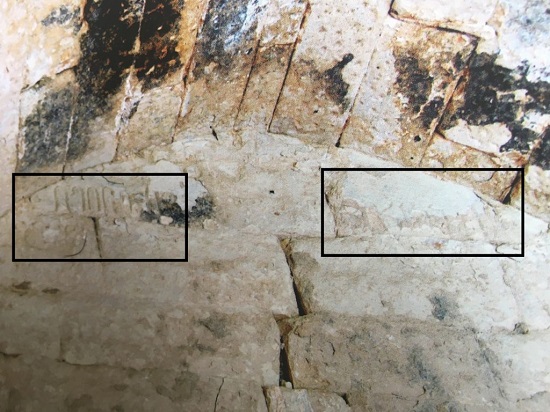
Hromkla inscription in Classical Armenian: the part on the left says “Have mercy on…” and on the right is the name Hohannes (unenhanced image)
Maranci encourages those of us facing travel restrictions, exclaiming, “For everyone who has travelled and photographed churches, inscriptions, paintings – you can review them and discover new things—all you need is a computer and some curiosity!”




















































